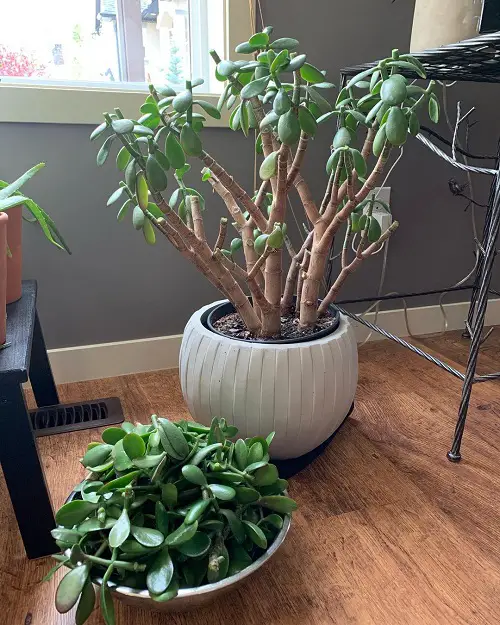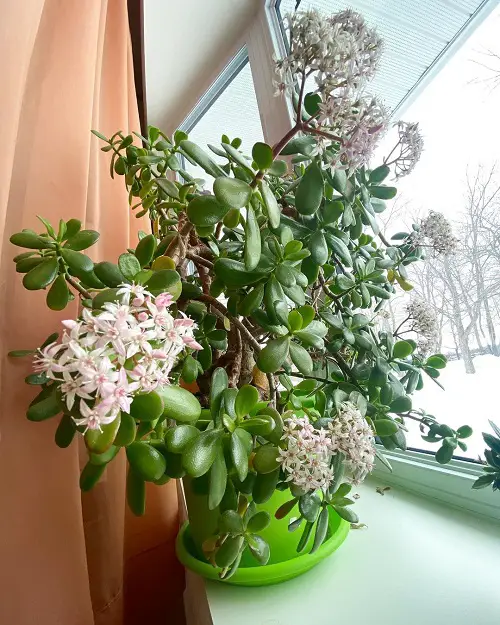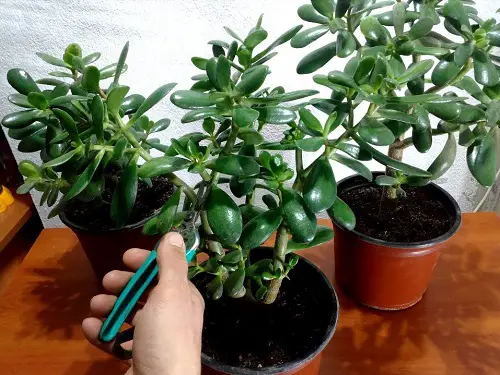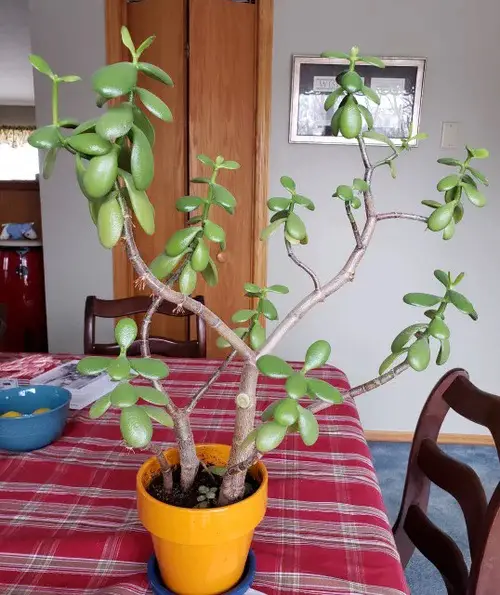Learn How to Prune a Jade Plant like an Expert with this comprehensive guide, and find out the best pruning techniques.

With the right approach, anyone can prune a crassula ovata like an expert and keep this good-luck plant looking its best. Note down the details shared below to learn How to Prune a Jade Plant Like an Expert.
Learn How to Grow a Jade Plant into a Tree
Pruning Jade Plant

The Jade Plant, also known as the “money plant” or “lucky plant,” is a popular houseplant prized for its fleshy, oval-shaped leaves and ease of care.
Pruning jade plants is important to maintain their shape, promote healthy growth, and encourage the development of new stems and leaves.
Why Pruning a Jade Plant is a Good Idea?
- Encouraging Growth: Pruning encourages new growth, leading to a fuller and healthier plant.
- Controlling Size: You can use it to keep the jade plant within a certain size range, making it more manageable for your space.
- Improving Shape: To manage the shape of your jade plant to give it a more attractive appearance.
- Encouraging Branching: Pruning can encourage the jade plant to branch out and create a more full and dense canopy.
- Removing Damaged or Diseased Growth: It can also be used to remove damaged, diseased, or dead growth, which can help keep the plant healthy and prevent the spread of any plant problems.
Note: It is important to use clean and sharp tools to minimize damage to the plant and only to prune when the plant is in its active growth phase.
Learn How to Get a Big and Bushy Jade Plant
How to Prune a Jade Plant Like an Expert?

1. Choose the Right Time
The best time to prune a jade plant is in late winter or early spring when the plant is not actively growing. This is when the plant has enough energy to recover from pruning and grow new stems and leaves. You can also prune it in spring and up to early summer for the best result.
Pruning at the wrong time, such as in late fall or winter when the plant is dormant, can weaken its new growth and leave it more susceptible to disease.
2. Prepare Your Tools
You’ll need a pair of sharp, clean pruners, a pair of scissors, and a bowl of rubbing alcohol. Dip the pruners and scissors into the bowl of rubbing alcohol and wipe off the blades with a paper towel.
3. Identify Which Parts to Prune
1. Inspect the plant for dead, discolored, or damaged leaves. Prune these off, as they are not providing any benefit to the plant.
2. While shaping is all up to you, you can look out for any stems that are lanky and wayward – these should be pruned off, as they are not contributing to a healthy and attractive shape for the plant.
3. Check for any overcrowded stems. Trim these off to promote air circulation and prevent diseases from spreading.
4. Look for branches crossing or rubbing against one another. Snip these off, as they can cause damage to the plant.
5. Remove any stems that are growing in an undesirable direction. Prune these off to encourage the plant to grow in the desired direction.
6. Prune any stems that are not producing healthy leaves. Cutting these off will help to keep the jade plant healthy and encourage new growth.
4. Cut at the Right Spot
Jade plants should be pruned above the point where you see two tiny little bumps called nodes. This boosts the lateral growth of this succulent. Or, you look out for a set of leaves and trim above them.
Pruning at this point will encourage the plant to develop two new stems, which will create a fuller and more bushier plant.
5. Do Not Over Prune
Jade plants are succulents that require careful pruning. If it is over-pruned, it can become stunted and may never reach its full potential size. Do not prune more than 1/3 of the plant at a time.
Additionally, over-pruning can cause the plant to become weak and vulnerable to pests and diseases. Last but not least, because it is a slow-growing plant, doing this a lot can reduce the number of flowers and foliage, which can diminish the aesthetic appeal of the specimen.
6. Watering Your plant
After pruning your jade plant, it’s important to provide it with adequate water. Start by giving the plant a deep soaking to ensure the roots have access to plenty of water.
Once the jade plant has had a good soak, let the excess water drain away and place it back in its normal position.
Instead of watering this plant regularly, do it irregularly, only when the soil dries out well. This will help to prevent rot and encourage healthy root growth.
Note: It’s a good idea to let the plant rest for a week or two after pruning to allow it to recover and adjust to its new shape. During this time, it’s important to keep an eye on the plant and ensure it’s not showing any signs of stress.
Learn Jade Plant Care Indoors
Pruning Jade Plants for Dense Leaf Growth

Rejuvenation pruning can help boost dense leaf growth in old Jade plants. To perform rejuvenation pruning, you should:
- Cut off all old branches where they meet the trunk.
- Shorten overtly long branches by about one-third, leaving at least two pairs of leaves on each shoot if possible.
- Remove all dried-up or discolored parts of the plant.
This type of pruning will stimulate the plant to produce new growth and result in a denser leaf structure. Do this only when you observe your plant not growing well. The best time for this is mid-spring to early summer when the plant has shown some growth.
Find How to Save a Dying Jade Plant
Pruning Jade Plants for a More Regular Growth
To shape and maintain the form of a Jade plant, formation pruning is essential. This allows you to control the height and width of the plant according to your desired look.
- To promote upward growth, you should trim all side shoots back by no more than half their length.
- For outward growth, shorten the trunk by one-third. Only prune new branches at the tips of the shoots.
Relief pruning is also important for older trees with drooping branches. To prevent the mini jade tree from falling over, cut off the drooping branches about three inches before they bend.
Make sure to leave a few pairs of leaves, as this will encourage new branching to develop on the shoot. Alternately, tie up the drooping shoots, and they will grow upright again over time.
Pruning Jade Plants for Propagation
Propagating a Jade plant is simple and can be done through cuttings. To propagate a Jade plant, select a healthy branch that has not flowered and cut its section top section off, below the leaf node.
This cutting will grow into a new, separate Jade plant. Learn Growing a Jade Plant from Cuttings.
Pruning Jade Plants in Situation of Disease or Pest Infestation
In case of pests and diseases, radical pruning may be the solution to help the plant regain its health. This involves severely trimming all affected branches down to one or two centimeters before they branch off further.
If the trunk has also been damaged, cut it to just above the lowest two side shoots. For larger jade plants, trim down the trunk heavily, leaving just a bit of it above the surface of the substrate.
Radical pruning can be hard, and sometimes the plant won’t recover, but considering it the only option, it gives the plant a chance to sprout again, essentially giving it a “new life.” This approach can effectively restore the vitality of a Jade plant that has been affected by pests or diseases.


